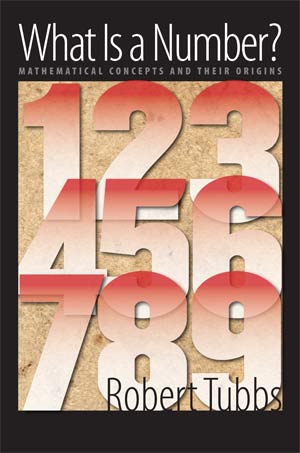
I find that non-mathematicians often perceive mathematics as a self-contained, inaccessible, body of knowledge that was essentially completed sometime in the distant past. Mathematics is seen as being isolated from most disciplines, especially from the humanistic endeavors of theology, philosophy, literature, and art. The concerns of mathematicians are imagined to have little in common with those of humanists. But this understanding of mathematics is mistaken on two accounts: mathematical objects and goals continue to evolve; and, mathematics is not now, and never has been, as separated from the more humanistic disciplines as it might appear to the contemporary eye.
At least since the sixth century B.C.E., theologians, philosophers, and artists have appealed to mathematical ideas and principles to inspire their work and further their arguments. For example, the result that some numbers cannot be expressed as a fraction of whole numbers (such a number is called an irrational number) has been used to support theological and philosophical conclusions about the nature of both time and space. At other times, appeals to provide intellectual underpinnings for a conception of reality or an aesthetic theory have been not to precise results but to general mathematical concepts such as the continuum or orthogonality.
What is a Number? offers an examination of the roles a few mathematical concepts—number, geometric truth, infinity, and proof—have played in our continuing attempts to understand the cosmos and our place in it. Using examples from ancient through modern times, the book reveals the central role mathematical notions have played in the history of ideas. Moreover, some of the examples used in the book illustrate how subtle mathematical relationships, such as the one between a line segment and the points it contains, have challenged both mathematicians and humanists. Through these historical examples, we discover that mathematical ideas are not esoteric or divorced from other intellectual or artistic pursuits; they are dynamic ones intrinsic to almost every human endeavor.
“The way someone conceives of a certain concept permits them to demonstrate a proposition just as well as its contrary—by using different conceptions of a number the ancients demonstrated that time is cyclic and medieval theologians that it is not.”
It is well known that mathematical ideas and techniques have long dominated the physical sciences. And in the twentieth century social and biological scientists began to mathematize their disciplines. But these are not, at least to me, the most intellectually interesting uses of mathematical ideas outside of mathematics. I have always been much more intrigued by appeals to mathematical ideas by humanists, by which I mean those who seek to understand our common humanity and our place in the cosmos.
It seems to me that the best way to explore these non-scientific uses of mathematical ideas is to present them in context. Since the historical scope of What is a Number? is vast, beginning in the sixth century B.C.E. and ending in the present, I have focused primarily, but not exclusively, on three periods and themes: ancient attempts to understand the fundamental nature of reality; medieval arguments supporting a faith-based view of the cosmos, and refuting portions of the ancient one; and modern appeals to mathematical concepts to promote a conception of reality or an aesthetic theory.
The mathematics of each of these periods, and so the conclusions reached by those appealing to its ideals, have a distinctive flavor. At the risk of over simplifying, ancient Greek mathematics was based on the ratio of whole numbers and on geometric perfection. This led to a universe having harmony as its fundamental organizing principle, to art based on ratio and proportion, and to a theory of matter based on geometric beauty. Although some mathematical and observational discoveries were contrary to this aesthetic, its real challenges came in the Middle Ages with attempts to reconcile these ancient ideas with presumed theological truths. Medieval theologians and philosophers had to perform a delicate balancing act—retain those features of ancient natural philosophy that agreed with their worldview (e.g., the finite, geometrically perfect cosmos) and reject those that did not (e.g., the deduction that geometric perfection in the heavens implies that time must be cyclic). To achieve this balance many theologians turned to mathematical principles and embraced previously suspect mathematical concepts, such as irrational numbers or infinite collections.
These examinations reveal several interesting things. One is that the mathematical ideas themselves were not so well understood as those employing them might have hoped. Another is that the way someone conceives of a certain concept permits them to demonstrate a proposition just as well as its contrary—by using different conceptions of a number the ancients demonstrated that time is cyclic and medieval theologians that it is not. And lastly, that it is possible to appeal to a presumed mathematical truth for reaching different conclusions—knowledge of the behavior of parallel lines in Euclidean geometry and an examination of shadows on the earth were used to prove both that the earth is flat and that it is round.
I find that these obscure medieval, theological arguments, which indeed included discussions of the properties of angels, allowed for many of the artistic and philosophical breakthroughs of the Renaissance and subsequently of the modern era. Questioning the ancients eventually undermined the theory of vision that had been described by Euclid and allowed for the invention of the single-point perspective method of painting. Allowing for existing mathematical infinitudes led some to the conclusion that there should be no bound to God’s benevolence and creative powers and so the cosmos must be infinite and contain an infinitude of inhabited worlds. Accepting irrational numbers allowed for thinking about mathematical results separate from physical ones and led to a view of mathematics as a purely axiomatic system.
This last point eventually yielded the discoveries, in the nineteenth century, that geometry need not necessarily be Euclidean, so alternate geometric truths are possible, and, in the twentieth century, that mathematical truth itself is difficult to identify. However, these discoveries have neither reduced the appeals by humanists to mathematical ideas nor demoralized mathematicians. Writers and artists have explored both fractured, and plastic, space and time; theologians and cosmologists have readily embraced infinitude and multiple dimensions.
What I find to be especially interesting is that a sort of mysticism has returned to mathematics. Mathematicians are often praised more highly for their insights than for their proofs. And these insights are judged not by how well they mesh with the ancient worldview based on harmony and geometric perfection, but by a new aesthetic—elegance.
Due to the historical scope of this book there are several themes that weave through the entire narration. Take, for example, the attempts of various writers to understand the concept of infinity. In chapter 3 I delineate three different notions of infinity: poetic, metaphysical, and quantitative. Aristotle, whose ideas about infinity dominated western thought for at least a millennium, used geometric principles to explain his understanding of quantitative infinity. This analysis led Aristotle to reject the belief that there could exist an infinitude, either physical or mathematical. Aristotle combined his rejection of existing infinitudes with ideas from his physics to conclude that space could be endlessly subdivided; there is no shortest distance. By examining the nature of motion Aristotle then concluded that time could also be endlessly subdivided; so there is no shortest increment of time.
One consequence of Aristotle’s view of space and time is that if there were to exist an indivisible piece of matter (like an atom without distinguishable parts) then its motion would be impossible. This conclusion troubled many medieval theologians because of its implications for angels. One conception of angels was that they were made of an incorruptible substance. But an incorruptible substance cannot be made up of other substances so an angel cannot have distinguishable parts—in Aristotle’s terms an angel is indivisible. Since Aristotle had concluded that any such entity could not move, and Christian cosmology employed angels in the motions of the heavenly bodies, some theologians sought to undermine Aristotle’s argument and began with his conception of space and time. In doing this, because of the almost unquestioned correspondence between the physical and mathematical worlds, these theologians sought to demonstrate that a geometric continuum could not be endlessly subdivided. More specifically, they sought to demonstrate that a line segment was made up of only finitely many points.
In the fourteenth century this topic was widely discussed. One argument attempting to demonstrate that a line segment contains only a finite number of points invoked God’s omniscience: If a line segment can be endlessly subdivided then even God could not know all of its points. Not wanting to delve into purely theological issues, this argument was refuted by a result from mathematics: If a line segment consists of only finitely many points then, by looking at the side and diagonal of a square, it is possible to conclude that the square root of two is a ratio of whole numbers (contrary to its known irrationality). At least one theologian got around this last objection by re-imagining the nature of a line segment, but others sought less radical counters. One of these made the acceptance of existing infinitudes more acceptable: If a line segment consisted of only finitely many points then an omniscient God would see gaps between them. But there are no gaps in a line segment so it must consist of infinitely many adjacent points.
What these arguments show is that scholastics struggled with conflicts between their theology, the concept of an all-powerful God, their understanding of, for lack of a better word, physics, and the then-current conception of mathematical objects. Moreover, these discussions, and the attempts to defend positions of faith with mathematical ideas, assisted in the acceptance of previously rejected mathematical concepts—in the brief example above, irrational numbers and existing infinitudes.
“In the fourteenth century [… o]ne argument attempting to demonstrate that a line segment contains only a finite number of points invoked God’s omniscience: If a line segment can be endlessly subdivided then even God could not know all of its points.”
What is a Number? could mistakenly be taken as critique of mathematics or of the typical mathematicians’ view that, despite twentieth century discoveries in logic, mathematical certainty can be achieved. Even worse, this book could be seen as being critical of humanists who might import mathematical ideas into their work. The book is neither. Instead, What is a Number? attempts to refute the received wisdom that mathematical concepts are divorced from other intellectual pursuits—revealing them instead to be dynamic, even malleable, and influential in many humanists’ enquiries. The realization that these concepts are imprecisely defined, or that mathematical truth is a contingent thing, only further supports the view that mathematical ideas are as closely allied with those of the humanist as the scientist.
This last claim is perhaps striking because it is contrary to the contemporary view of mathematics. Mathematics is usually regarded as a handmaiden of the sciences, where in the last three centuries it has led to significant advances. But for over two millennia mathematical ideas and concepts have influenced humanistic thought. Mathematical ideas have been used not only by humanists who profess a rational predisposition but also by modern artists, existentialist philosophers, and mystical theologians. Indeed, mathematical ideals seem to be inseparable from many of those that define our humanness.


Robert Tubbs is an Associate Professor of Mathematics at the University of Colorado. His earlier mathematical research was primarily in Number Theory. He has co-authored, with Edward Burger, perhaps the first accessible introduction to Transcendental Number Theory, he has an unpublished novel sitting on the shelf, and he is currently writing a book on mathematics and mysticism.